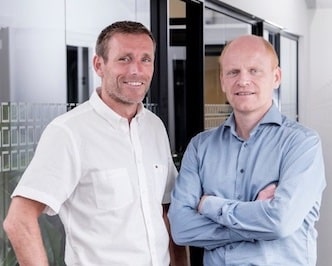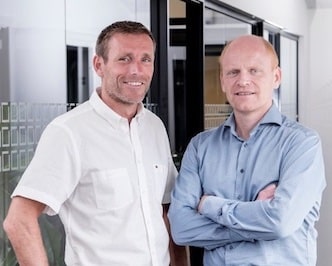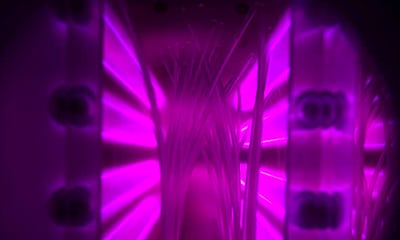Flame Treatment & Plasma Treatment Compared
In surface modification, achieving the right bond between materials can be the difference between product success and failure.
Two much-used techniques, flame treatment, and surface treatment with Corona treatment and plasma treatment, have emerged as frontrunners in improving adhesion.
But which method is superior? And under what circumstances?
This article delves deep into the intricacies of both treatments, comparing their benefits, drawbacks, and applications.
When you have read this, you’ll have a better understanding of which technique best suits your needs and why surface treatments are pivotal in modern manufacturing.

Solving your adhesion problems
We have more than 50 years of experience in delivering and manufacturing quality, high-end surface treatment products for any industry.
Tantec has both standard machines, but also custom-designed machines.
Contact us today and get a quote. We are standing by to service you.
Solving your adhesion problems
We have more than 50 years of experience in delivering and manufacturing quality, high-end surface treatment products for any industry.
Tantec has both standard machines, but also custom-designed machines.
Contact us today and get a quote. We are standing by to service you.


Solving your adhesion problems
We have more than 50 years of experience in delivering and manufacturing quality, high-end surface treatment products for any industry.
Tantec has both standard machines, but also custom-designed machines.
Contact us today and get a quote. We are standing by to service you.
Flame Treatment: The Challenges
Flame treatment has been a widely used surface modification technique, especially for polymers and plastics with poor adhesion. And especially used on larger subjects. By exposing the material’s surface to an open flame, it oxidizes and increases its surface energy, making it more receptive to inks, adhesives, and coatings.
But be aware, here’s a look at the challenges of flame treatment.
Challenges with Flame Treatment
- Less Precision and Consistency: Flame treatment doesn’t offer the same level of precision as some other surface treatment methods. The intensity, duration, and uniformity of the flame can vary, leading to inconsistent treatment results across different batches or even within the same batch. Achieving a consistent flame and maintaining it can be challenging.
- Risk of Damage to Materials: The direct exposure of materials to open flames can lead to overheating, which might cause warping, deformation, or other types of damage. Some materials might also discolor or degrade when exposed to high temperatures. It’s crucial to carefully calibrate the flame treatment process for each material type to avoid such issues.
- Safety Concerns: Using open flames in an industrial setting inherently poses safety risks. There’s always a potential for accidental fires, especially if flammable materials are nearby. Operators are also at risk of burns or injuries if proper safety protocols aren’t strictly followed. Adequate training and safety measures are essential.
- Environmental and Health Concerns: The combustion process in flame treatment can produce emissions, including carbon dioxide, carbon monoxide, and other potentially harmful gases. These emissions can raise environmental concerns, especially if the process isn’t well-ventilated. Additionally, prolonged exposure to these emissions can pose health risks to operators.
- Material Limitations: While flame treatment is effective for many polymers, it’s not universally suitable. Some materials, especially those sensitive to high temperatures or prone to thermal degradation, might not be ideal candidates for flame treatment. It requires a good understanding of the material’s properties and behavior under heat to determine its suitability for flame treatment.
Equipment Maintenance: Burners and other components of flame treatment systems require regular maintenance to ensure they function correctly. Over time, residues or contaminants might accumulate, affecting the quality of the flame and, consequently, the treatment results.
Alternatives to flame treatment
Industries evolve and the demand for precision and environmental considerations grows, alternatives to flame treatment have emerged.
One of the most prominent and effective alternatives is plasma and corona treatment. It has emerged as a particularly promising alternative.
Plasma Treatment: An Overview
Plasma treatment utilizes ionized gas, or plasma, to modify the surface properties of a material. This ionized gas is created using various gases, such as air, argon, or oxygen.
The high-energy ions and radicals present in the plasma interact with the material’s surface, leading to both chemical and physical changes.
These changes can enhance the material’s adhesion properties, making it more suitable for bonding, coating, and printing applications.
Understanding the very basics of plasma treatment sets the stage for a deeper exploration of its benefits.
Benefits of Plasma Treatment
- Precision: Plasma systems offer precise control over treatment conditions, ensuring uniform and consistent results across the material surface. The precision from flame treaters will not be as greatly improved as treatment with plasma.
- Versatility: Plasma treatment can be applied to various materials, including metals, ceramics, and various polymers. This makes it suitable for diverse industries, from electronics to medical devices.
- Environmentally Friendly: Plasma treatment is often considered more environmentally friendly than flame treatment. It uses fewer chemicals, produces less waste, and in many cases, operates at lower temperatures.
- Safety: Without the need for open flames, plasma treatment poses fewer safety risks, making it a preferred method in environments where safety is paramount.
- Functionalize Surfaces: Beyond just improving adhesion, plasma treatment can functionalize surfaces, adding specific chemical groups that can benefit subsequent processes or applications.
Types of Plasma Treatments
- Atmospheric Plasma: Operates at atmospheric pressure and doesn’t require a vacuum environment. It’s suitable for continuous manufacturing processes and treating larger parts.
- Blown Ion Plasma: A type of atmospheric plasma where the primary active species are positive ions. It’s effective for treating nonconductive surfaces.
- Low-Pressure Plasma: Requires a vacuum environment and offers a more controlled treatment process, ideal for delicate or intricate parts.
Comparing Plasma Treatment to Other Alternatives
While plasma treatment stands out as a primary alternative to flame treatment, there are other methods like corona treatment. Corona treatment uses high voltage to generate a corona discharge, modifying the surface layer of the plastic parts.
However, plasma treatment often offers deeper penetration and more uniform treatment than corona, making it a preferred choice for many applications.
Corona Treatment: An Overview
Corona treatment is a widely used surface modification technique designed to increase the surface energy of various materials, especially plastics. By exposing the material to a high-frequency electrical discharge, or corona, the surface becomes oxidized, making it more receptive to inks, adhesives, and coatings.
Benefits of Corona Treatment
Improved Adhesion: Corona treatment effectively increases the wettability of polymers, ensuring better adhesion of inks, paints, glues, and coatings.
Versatility: It can be applied to a wide range of materials, including films, foils, and paper.
Cost-Effective: For many applications, corona treatment offers a cost-efficient method for surface preparation.
Environmentally Friendly: The process doesn’t rely on solvents or chemicals, reducing environmental impact.
Types of Corona Treatment
Atmospheric Corona Treatment: Conducted at standard atmospheric pressure, this is the most common method used, especially in the packaging industry.
Low-Pressure Corona Treatment: Conducted in a vacuum or controlled environment, this method is more specialized and is used for certain applications where atmospheric conditions might not be ideal.
Conclusion
Flame treatment was a popular choice for many industries due to its effectiveness, speed, and simplicity. However, weighing its benefits against its disadvantages is essential, especially when considering safety and environmental factors.
Depending on the specific requirements of the task, other surface treatment methods, like plasma or corona treatment, might offer advantages that better align with the desired outcomes for adhesion success.
Having delved into the intricacies of flame treatment, let’s now turn our attention to other methods that industries are considering as potential alternatives.
Video: Tantec RotoTEC-X | Corona Treatment System

Solving your adhesion problems
We have more than 50 years of experience in delivering and manufacturing quality, high-end surface treatment products for any industry.
Tantec has both standard machines, but also custom-designed machines.
Contact us today and get a quote. We are standing by to service you.

Solving your adhesion problems
We have more than 50 years of experience in delivering and manufacturing quality, high-end surface treatment products for any industry.
Tantec has both standard machines, but also custom-designed machines.
Contact us today and get a quote. We are standing by to service you.
Solving your adhesion problems
We have more than 50 years of experience in delivering and manufacturing quality, high-end surface treatment products for any industry.
Tantec has both standard machines, but also custom-designed machines.
Contact us today and get a quote. We are standing by to service you.


Solving your adhesion problems
We have more than 50 years of experience in delivering and manufacturing quality, high-end surface treatment products for any industry.
Tantec has both standard machines, but also custom-designed machines.
Contact us today and get a quote. We are standing by to service you.







